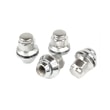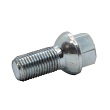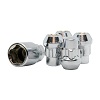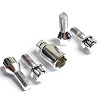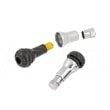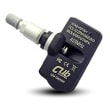When to replace rims?
Replacing a car's rims isn't difficult. But when is it worth doing? In what situations is rim replacement absolutely necessary?
Learn everything you need to know about replacing rims, specifically why you should replace them, when, where, and with which ones. Alloy wheels or steel rims? What to look for when buying new rims, and is it worth having two sets of rims, along with winter and summer tires? This is valuable and important knowledge—you'll find it in the following paragraphs.
Why replace rims?
The primary reason for replacing a rim is damage. However, this isn't the only situation in which you might want to buy new rims. Replacing rims with larger ones is also a common procedure. This is usually related to the desire to use low-profile tires, which many people consider more attractive, or to take advantage of their greater sporty capabilities.
If you're switching to winter tires, the best solution is to also purchase the appropriate rims (along with your first set of tires) so that you don't have to rotate tires every six months, but can simply replace the entire set. A set of wheels takes up the same amount of space as the tires themselves, and changing tires and rims is much faster and easier. For example, BMW rims can be purchased for as little as 1,000 złoty per set, so the savings from changing tires twice a year will quickly pay for themselves.
How do you know if a rim needs to be replaced?
Replacing damaged car rims isn't complicated. But when is a rim so damaged that it's no longer usable? Symptoms of a damaged rim include:
- body vibrations;
- steering vibrations;
- rim wobbling while driving.
In such a situation, you should carefully inspect the rims. If no damage is visible, take them to a workshop for a thorough inspection of the car. In some cases, rim repair is possible. However, steel rims are usually repaired; replacing aluminum rims is more common than repairing them due to the material they are made of. Not all aluminum alloys can be reworked, and not all damage can be repaired. Examples of damage to aluminum rims that cannot be repaired include:
- damage to arms or spokes;
- deep scratches on the surface;
- distortion of the rim axis.
In the case of steel rims, the cost of reconditioning them would often exceed the cost of purchasing new ones, so it is not cost-effective.
If you are constantly losing air from one of your tires, then, in addition to assessing the tire itself, it is also a good idea to look at the rim itself and look for any damage.

How often should you replace rims?
Rims, like any other car component, are subject to wear and tear. Besides the obvious need to replace them if they suffer significant damage, they gradually weaken over time. Good steel rims should last the life of the car. Aluminum rims can be a bit more challenging—replacement will certainly be necessary if wheel balance issues arise. Of course, you need to carefully determine whether the problem lies with the rims or the tires. Cars on the road sometimes appear with a large number of lead weights attached to the rims. However, this is a symptom of something wrong with the rim or tire, and you should get to the root of the problem, not just fix it. When should you replace your rims? The following paragraph lists the situations when rim replacement is necessary.
Can you drive with a damaged rim?
Driving with a damaged rim puts both your car and you at risk. Any of the following damages indicate the need for rim repair or replacement.
Rim warping
A bent rim causes many unpleasant consequences. Firstly, it introduces vibrations that make driving difficult and has a significant impact on the wheel bearings. Secondly, a bent rim can also lead to a loss of tire pressure, requiring constant re-inflation of one tire. Driving with too little pressure in one tire causes the car to pull to one side, which is extremely dangerous when braking and can lead to tire damage.
Rim wobble while driving
A wheel rim that wobbles while driving indicates that it has become bent, and driving on such a rim may result in the consequences described above. While steel rims can be repaired, it's not always, and even rarely, cost-effective. Repairing aluminum rims is much more problematic. A better solution is to replace the damaged rim.
Crack in the aluminum rim
A crack in an aluminum rim immediately disqualifies it from further use. Such a rim should be replaced immediately.
Deep scratches on the rim
This is a very serious type of damage, often underestimated by owners of aluminum rims. Such deep scratches are a potential site for further cracking. Various repairs (such as aluminum welding) are sometimes used in this case, but they do not restore the full strength of the new rim.
Replacing aluminum rims is therefore often a necessity and you must do it for your safety.

What should you pay attention to when buying new rims?
When purchasing new rims, you need to consider many parameters. Of course, aesthetic value depends solely on your taste and whether they match the model or color of your car.
Each rim has its specifications listed on the inside. Typical rim designations for 16-inch aluminum rims include:
7.5Jx16H2 ET35
Where:
- 7.5 – means width in inches;
- J – means flange profile;
- 16 – indicates the rim diameter in inches;
- H2 – rim cross-section profile;
- ET35 – rim insertion depth.
First, remember to order rims in the size allowed by the car manufacturer. Sometimes it's just one diameter, like 16 inches, or sometimes two: 15 and 16 inches. The right 16-inch aluminum rims will definitely enhance the look of your car.
The second important thing is the bolt pattern and number of bolts. Most popular models are similar, but there are some less common designs. For example, 15" 4x108 alloy wheels mean a 15-inch wheel size with four 108-inch bolts.
You should also find the embedment depth in the car manual and match the ordered rims to it.
When it comes to alloy wheels, it's important to check whether they're suitable for winter use. Not all aluminum rims are adequately protected against such conditions, which can result in significantly faster wear and tear and, consequently, damage.
Buying used rims isn't the most sensible solution either. This is especially true for aluminum rims, which may look great but have hidden flaws that will become apparent (for example) during wheel balancing.
Does changing tires damage rims?
Every time you remove and reinstall a tire, you risk damaging the rim, especially aluminum rims, which are more susceptible to scratches and dents. A good workshop should perform the entire process (without damaging the tire or rim), but there's never a 100% guarantee. That's why buying winter tires with a complete set of rims is becoming so popular, saving time and guaranteeing a longer lifespan for the entire set. It also allows for the use of aluminum rims in a summer set, which aren't designed for Polish winter conditions.
Replacing rims with larger ones
When upgrading to larger rims, there are many things to keep in mind. They must fit, along with the tire, in the wheel arch in all positions on the front axle. The vehicle manufacturer specifies the rims that can be used, and these are usually one or two adjacent sizes. When upgrading to even larger rims, low-profile tires are combined with them, allowing the entire assembly to fit within the wheel arch. However, this significantly impacts the shock absorption properties and is highly susceptible to damage.
Many people, however, make this change simply because of the overall visual appeal of the car. The low profile also facilitates quick cornering, which, however, would be more appropriate on the track than in street traffic. If you're considering upgrading to larger rims, check out options like 17" 5x112" alloy wheels or even larger 19" alloy wheels .

Replacing rims and the pressure sensor
Replacing rims with a pressure sensor requires entering the new sensor number into the car's computer. This is a relatively simple process, but the workshop may charge an additional fee. When ordering rims, remember to check whether small devices like pressure sensors can be installed if your car is equipped with a direct tire pressure monitoring system. Replacing rims without a sensor requires no software changes and is usually slightly cheaper.

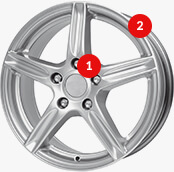

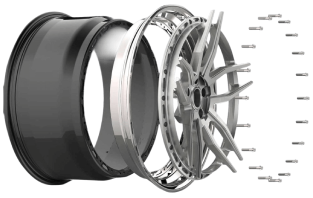
 Modern design
Modern design Perfect fit
Perfect fit High durability
High durability Free shipping within 24 hours
Free shipping within 24 hours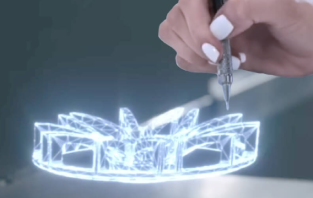
 Individual project
Individual project Dedicated caregiver
Dedicated caregiver
